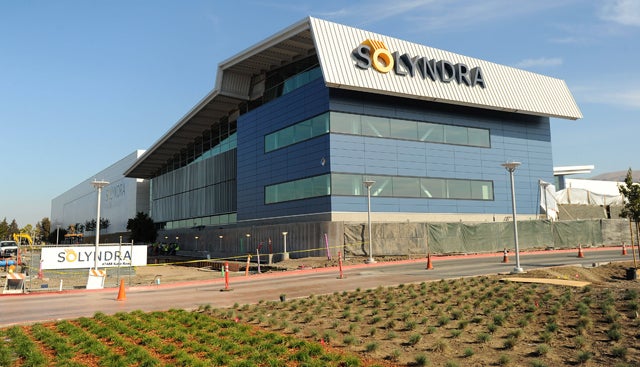Basking in the glow from the $535 million fire left when Solyndra crashed and burned, the Department of Energy is ready to subsidize additional hundreds of millions in loans to solar energy companies.
The logic of this latest round is stunning: One company supposedly needs the government subsidy because its cost of production is so low; the other company supposedly needs the government subsidy because the government is buying its product.
Solyndra, of course, is the poster child turned object lesson. After the company received loan guarantees (that now must be made good) of $535 million in the fall of 2009, President Obama said “companies like Solyndra are leading the way toward a brighter and more prosperous future.” The two years following that loan guarantee were a continuous downward spiral for Solyndra, and on August 31, it announced it would file for bankruptcy.
Maybe Obama confused the sad story in chapter 11 of the Bankruptcy Code, where companies admit they cannot pay their bills, with the happy story in chapter 11 of Pollyanna, where Pollyanna gets to keep the kitten. In any event, few people define “brighter and more prosperous future” as “going bankrupt.”
“We have such a great product that nobody will lend us the money,” was the nonsensical argument from Solyndra and its backers. Those who did not see the logical flaw in 2009 cannot help but see the flawed result in 2011. Unfortunately, some still do not see the logical problem that led to the mess.
After what appears to be nearly a full week of soul searching following the Solyndra debacle, the Department of Energy is jumping back into the who-needs-logic loan-guarantee business. First up is $150 million for 1366 Technologies. This example highlights the inanity of government loan guarantees. The claim is that 1366 Technologies can produce commodity silicon wafers at lower costs than current producers. If that is true, then private investors will jump in with the money. Such an investment opportunity would not need loan guarantees. With interest rates in the low single digits, investors are dying to find viable places to put their money. If, on the other hand, 1366 Technologies cannot produce commodity wafers at a lower cost, then nobody should lend them the money. Venture capitalists—with their own money at stake—have a better record of sorting these things out than do venture bureaucrats and venture politicians, with only taxpayers’ money at stake.
In the second case, the Department of Energy will guarantee $275 million in loans to SolarCity, an installer of rooftop solar electricity systems. The loan will finance the installation of 160,000 rooftop systems on houses and apartment buildings on military bases. SolarCity will sell the electricity those systems generate to the military. In short, one branch of the government is subsidizing another branch of the government, with the inevitable frictional losses in the process. If even the Pentagon was unwilling to pay the full cost of SolarCity’s electricity, that is a bad sign.
Federal loan guarantees are based on the theory that the political market has a better system for spotting commercially viable investments than does the private market. Solyndra is the latest and one of the most notorious counter-arguments to that theory. Loan guarantees to SolarCity and 1366 Technologies show that evidence does not matter in the political market.
